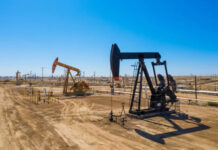RBA Governor signals enquiry into Unconventional Monetary Policy Tools; wages growth front and centre of the policy outlook; and emphasises the Board’s patience on rate lift off.
Today we have seen two important communications from the Reserve Bank.
The Minutes of the November Board repeated the messages from the Governor’s Statement and later speech on November 2
However, the Minutes did reveal that the Board plans an enquiry into the Yield Curve Target Policy that was introduced in March 2020 and cancelled following the November Board meeting. Later in the day the Governor expanded on those intentions to cover all the extraordinary measures – YCT; QE; TFF and forward guidance that were introduced during the Covid related emergencies.
The Speech and Key Messages
The Governor discussed the dynamics of the recent surge in inflation overseas in terms of the rebalancing of spending between goods and services. In the G7 goods consumption had lifted by 10% since 2019 whereas services spending was down by around 7%
Supply of goods had been constrained by lockdowns; demand was boosted by fiscal payments while the pressures on logistics from the demand surge boosted freight and other transport costs.
He noted that central banks and International Agencies expected that these inflation pressures would subside in 2022 as supply disruptions eased and spending rebalanced away from goods to services. He noted that the IMF was forecasting a return to around 2% inflation in G7 in 2022.
The key issue was how labour markets respond to the current surge in prices. It would be unusual if prices and wages were not moving together.
In particular the risks were around higher prices boosting inflationary expectations and wage norms.
A period of higher wages growth would have a persistent effect on overall inflation.
A significant issue here was going to be the balance between demand and supply of labour. This is seen to represent a major difference between US/UK /NZ and Australia/ Asia/ Europe.
Policies in Australia and Japan to allow workers to remain attached to their employers during COVID have ensured that participation and employment are sustainable when compared with the US where the participation rate has remained stubbornly low. A more flexible labour supply can contain wage pressures when the demand for labour rises as economies reopen.
A further test here will come with the strong demand for services as economies reopen.
He argues that we are already seeing this dynamic play out as wages growth is surging in US and UK while it has been contained in Australia and Japan.
In turning directly to Australia he plays down the recent surprise lift in underlying inflation as it “remains lower than the average of the past three decades.”
He notes the supply- demand imbalance showing in the cost of building materials; the supply shock effect on some imported durables; although there are important differences with the US/UK/ Europe.
The cost of electricity has been falling in Australia with the surge in renewables while overseas power systems struggle to meet demand.
But he puts considerable weight on the inertia of Australia’s wage setting system – annual minimum wage agreements; 2–3 year enterprise agreements; and public sector wage policies that move slowly.
Of course, that inertia is not prevalent in the informal bargaining sector while the possibility of industrial action as workers feel threatened by rising cost of living in the face of labour shortages could threaten the “inertia” theory.
A potential change of government by May might also have implications for the minimum wage setting result.
This leads to the key foundation for the Governor’s confidence that market pricing for multiple rate hikes in 2022 will prove misplaced, “we are expecting a gradual pick up in wages growth as the labour market tightens”.
Most importantly “We are using wages growth as one of the guideposts in assessing progress towards our goal and whether inflation is sustainably in the target zone.”
Of course, one nagging uncertainty that he often refers to is the link between the forecast unemployment rate of 4.25% by end 2022 (Westpac is 3.8%) and wages since we have not seen such a low unemployment rate since before the GFC and a 4% unemployment rate since he 1970’s.
How wages growth responds to such labour market tightness is a key issue of uncertainty for policy.
He ends his speech with a similar message to the Minutes, “It is likely to take time to meet the condition we have set for an increase in the cash rate and the Board is prepared to be patient.”
Question and Answer
The Governor provided his usual direct perceptive answers to a set of high quality questions as we have come to expect from the Australian Business Economists.
When asked about the mismatch between his guidance and market pricing he pointed to a different reaction function between the market and the RBA.
RBA does not target house prices; pace of inflation pick up required by the market to justify hikes by mid year would require wages growth to quickly lift to above 3% – given his views on the inertia of wages growth seems very low probability.
He was more balanced on the issues of the level of spare capacity in the labour market – pointing to high underemployment and the possibility of a significant lift in supply as international borders reopen – relieving skilled shortages as well as relief for hospitality and agriculture with foreign students and “back packers” returning.
When asked how he would react to 3%+ on underlying inflation but 2–2.5% on wages growth (implying negative productivity growth) he argued that such a configuration would question the sustainability of the lift in inflation and he would be inclined to “look through” the high inflation print.
This point emphasises the importance of the wages picture as the measure of sustainability.
Arguably, the risk in relying on the Wage Price Index with its inbuilt inertia is that it is sending a misleading signal about the likely build up in wage pressures. Most likely, in assessing the quality of the WPI signal the RBA should be weighing up other aspects of the labour market just as the FOMC uses a number of measures for “maximum employment.”
In the body of the speech the Governor pointed out that the markets expected peaks in the policy rates would be much lower than in previous cycles. So it was with great interest that he speculated that the Australian peak might be around 3.5% – a positive 1% real neutral rate. He noted the zero productivity growth implication behind a peak rate of 2.5% (zero real).
He argued that he expected that savers would not be satisfied with another era of negative real rates but overlooked the implications of positive real rates for highly leveraged asset markets and the feedback effects of sharp falls in those markets on the economy.
He tantalised the audience with a commentary on the trajectory of inflation and wages. The policy response to a sharp trajectory would be different to a slow grind, presumably for the same absolute level of inflation or wages growth. For the market, which is expecting that first move around mid year the December and March quarter Wage Price Index prints will need to show that rapid upswing in the trajectory. And bear in mind that the nation and business in particular will be in tight election mode Businesses are not known for bold decisions like changing the approach to wage setting when faced with the uncertainty of an election.
He noted the key criteria for the decision at the February Board on the bond buying program. Last week Westpac forecast that the program would be cut from $4 billion to $2 billion per week with the program to expire at the May Board. While confirming that the actions of other central banks and the smooth functioning of the bond market would be considerations for the decision he emphasised that the Bank’s forecasts would be “as important as the actual data.” With the forecasts unlikely to change sufficiently to drop the program altogether we remain comfortable with or view.
He clarified the use of market pricing for the interest rate profile used for the forecasts that were released for the November Statement on Monetary Policy. While the Bank had a very different view to market pricing he argued that due to the lags in monetary policy the impact on the forecasts would not be significant until 2024 and 2025 – beyond the two year forecasting horizon.
Since the RBA adopted the policy of not acting until the conditions were actually achieved rather than being pre-emptive we have not heard much about lags in policy. This just emphasises the importance of the trajectory; achieving the objectives with a steep trajectory would trigger a very different response than a more gradual trajectory.
Finally, we came back to the decision on QE in February. The Governor argued that market stability had returned after the abandoning of YCT as measured by bid/offer spreads but market practitioners noted that the market still needed more liquidity. The Governor opined that the RBA’s holdings of bonds (around 36% of bonds on issue by February) may be a factor although the markets’ interest rate expectations were a more likely cause.
Conclusion
The rule I have learnt over decades of analysing policy is that if a central banker gives a clear indication of what he intends doing in the near term then listen.
That near term probably extends into the first half of 2022.
But after that it does become a forecasting game. We expect that, at 4.25%, the RBA is too cautious on the likely fall in the unemployment rate in 2022. We are forecasting 3.8% – lowest since the 70’s. That should raise concerns that the inertia in the WPI might be sending unreliable signals.
At 3.8% the unemployment rate would move the wages/ employment dynamic into unprecedented territory and we can see a trajectory on inflation and wages growth building in the second half of 2022 that would satisfy the Bank.
It would set the scene for the first hike in February 2023.
The attraction of returning in the new year with a fresh policy approach has played out on numerous occasions especially now that the Governor now gives a traditional speech at the National Press Club about the year ahead.
We do hear the arguments about the inertia of the Wage Price Index so the lift in the growth rate we are expecting to 2.75% which would be announced in the November 2022 print would seem to be sufficient to justify lift off if it has a clear upward trajectory; the inflation condition has been met for two quarters, and the unemployment rate is the lowest since the 1970’s.
As usual the Governor has given another masterful analysis of the big issues around inflation; wages; and employment.
We are all focussed on that timing of lift off. But perhaps the more important issue is his assessment of the likely peak in the cash rate in the cycle (3.5%).
That thinking which compares with other cycles looks to overlook the key feedback effect from over leverage; richly priced asset markets; and financial conditions which are likely to call a halt to that next cycle well before that 3.5%.
Perhaps financial markets are too exuberant about the early timing of the first move in this next cycle but equally they are much closer to the mark on the peak in the cycle than the Governor and other central bankers.













